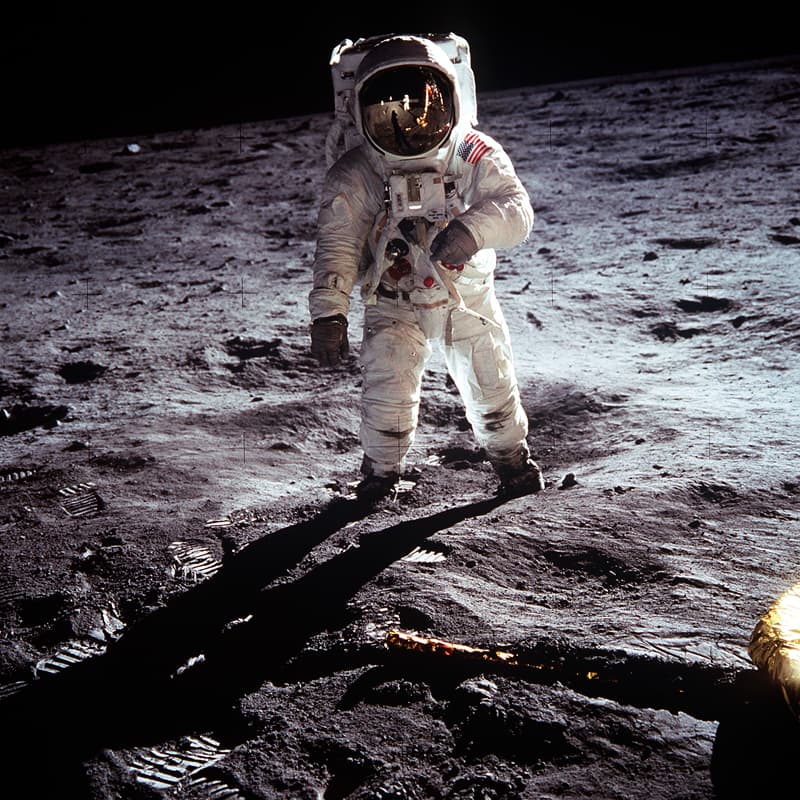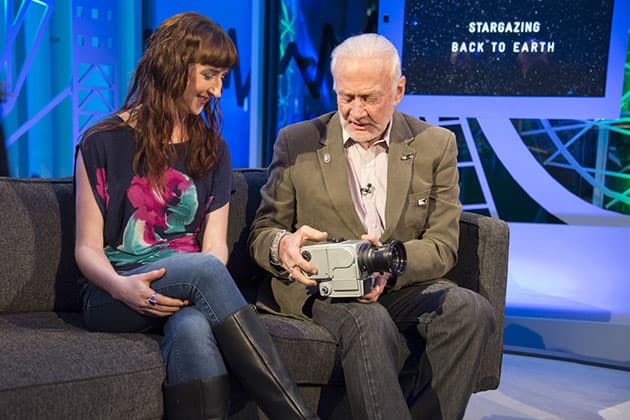Aldrin appeared on Stargazing Live. He is pictured here with the camera, chatting to lunar geologist Dr Katherine Joy
[Original article appears below]
BBC assistant producer Chris O’Donnell described the camera as a historic artefact.
He added: ‘It will be a nostalgic reunion and once Buzz has familiarised himself with it, we hope he will take some shots during the day…
‘Photos taken on the moon with the Hasselblad are incredibly important in the quest to understand how the moon was formed and conditions in the early solar system.’
Aldrin is also expected to answer questions from viewers.
 Image: Buzz Aldrin walks on the surface of the moon near the leg of the Lunar Module © Nasa
Image: Buzz Aldrin walks on the surface of the moon near the leg of the Lunar Module © Nasa
The Hasselblad EDC (Electric Data Camera) was specially adapted from the motorised Hasselblad 500 EL.
It used 70mm film and had no viewfinder.
The camera was fitted with a specially designed 60mm Biogon lens and had a polarising filter attached to the front.
The astronauts carried the camera mounted on their chest and pressed the shutter release while estimating what was visible through the lens.
Before going on the mission, they were each given a camera to take home and practise their technique.
The Hasselblad EDCs used on the surface of the moon were left there to reduce weight at the end of the mission.
The only items taken back into the Lunar Module were the film magazines containing the undeveloped images and around 22kg (48lb) of lunar rock.









